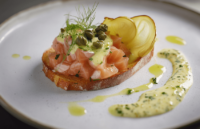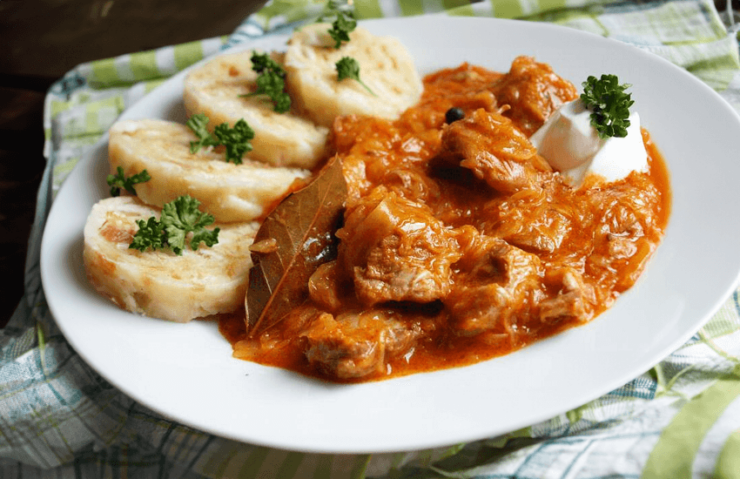History and Origins
Salmon tartare has its roots in the traditional dish of steak tartare, which originated in France. Over the years, this raw preparation has evolved, with seafood becoming a popular variation.
The use of salmon, known for its rich, buttery flavor, adds a luxurious touch to the classic tartare. Roasted fennel, on the other hand, brings in a hint of sweetness and a delightful crunch, complementing the smooth texture of the tartare.
Key Ingredients and Their Benefits
Salmon
Salmon is the star of this dish, providing a rich source of omega-3 fatty acids, essential for heart health. Its high protein content also makes it a great choice for a balanced meal.
Fennel
Fennel adds a unique flavor with its anise-like aroma. It’s not only delicious but also packed with nutrients like fiber, vitamin C, and potassium, aiding digestion and boosting immunity.
Capers
Capers bring a burst of tangy flavor, enhancing the overall taste profile. They are rich in antioxidants and have anti-inflammatory properties.
Limes and Lemons
The citrus elements in the lime emulsion and hollandaise sauce add a refreshing zing, balancing the richness of the salmon and butter. Citrus fruits are excellent sources of vitamin C, promoting healthy skin and immune function.
Preparation Tips
When preparing salmon tartare, ensure that the fish is of the highest quality and fresh, as it will be consumed raw. Knife skills are essential here; aim for finely diced pieces for the best texture.
Roasting fennel is straightforward, but keep an eye on it to maintain its crispness. Overcooking can lead to a mushy texture, which is less desirable for this dish.
The hollandaise sauce requires patience and careful attention. The key is to whisk continuously and add the butter slowly to create a smooth, velvety sauce without curdling the eggs.
Serving Suggestions
Serve this dish as a starter to a gourmet meal or as a main course for a light yet indulgent dining experience.
Pair it with a crisp white wine, such as a Sauvignon Blanc, to complement the fresh flavors of the salmon and the citrus elements.
Variations
For a twist, try substituting the salmon with tuna for a different flavor profile. You can also experiment with different herbs and spices to customize the tartare to your taste.
Vegetarians can enjoy a similar preparation using finely chopped beets in place of salmon, providing a vibrant and nutritious alternative.
Conclusion
The combination of fresh, high-quality ingredients and careful preparation techniques results in a dish that’s both visually stunning and delightfully delicious.
Discover a gourmet delight with our Salmon Tartare, Roasted Fennel, Capers Hollandaise, and Lime Emulsion recipe! Perfect for special occasions, this dish combines fresh flavors and elegant presentation.
Try it out and elevate your next dinner party to new culinary heights!





Please register to post comment.